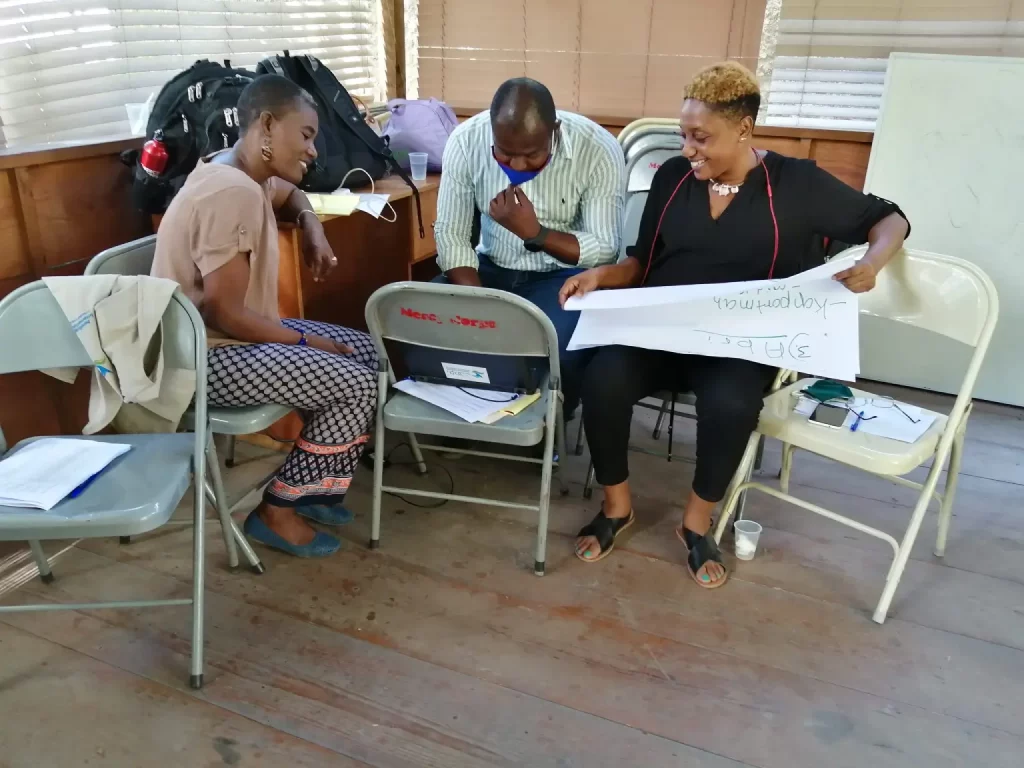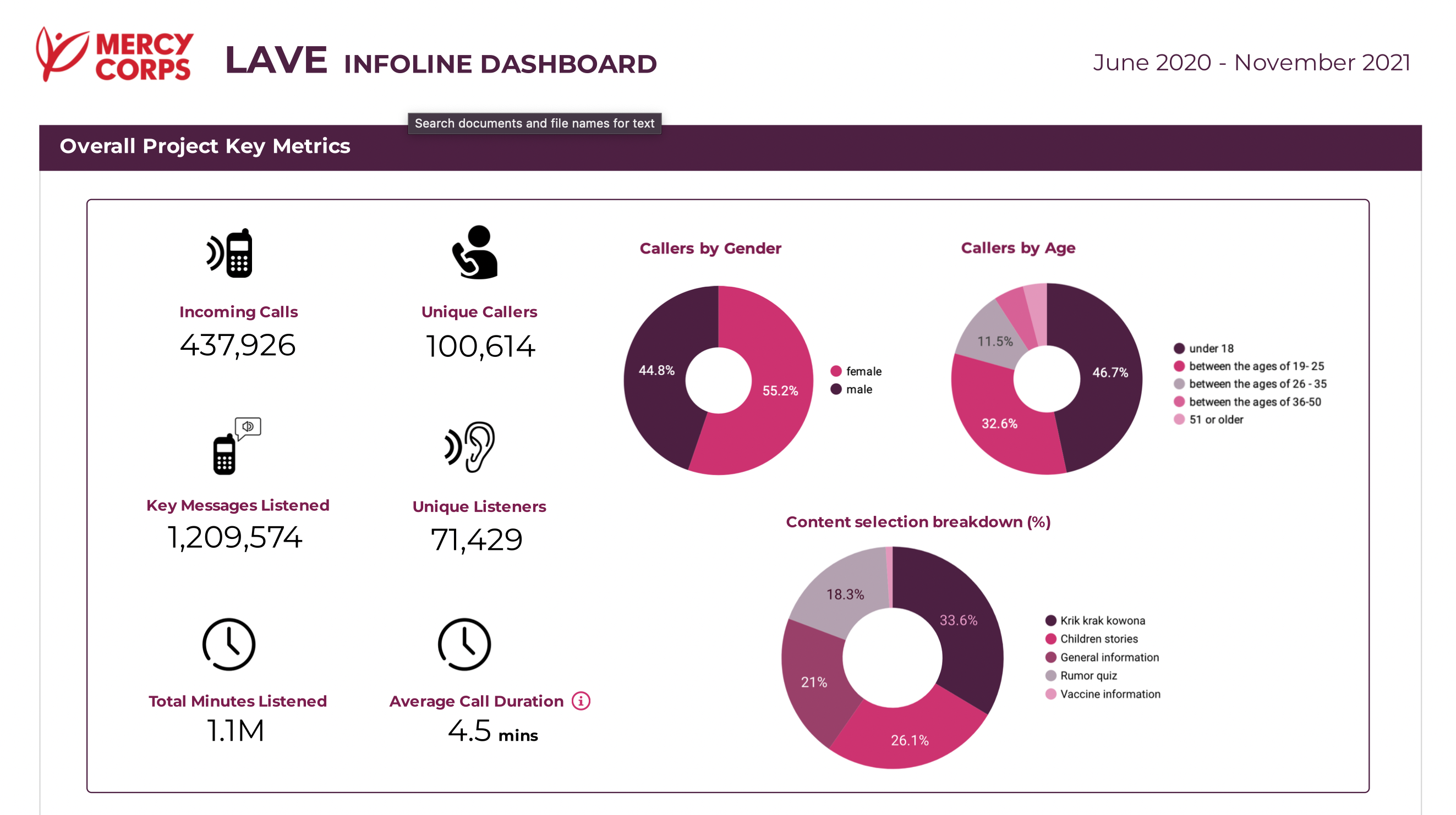Effective storytelling is rooted in connection and communication. How you tell a story, the language used and how the subject is presented all weave together as powerful tools to communicate effectively.
Cutting through the noise
By connecting academic concepts to everyday life, culturally-responsive stories can make learning experiences more personal, engaging and effective, especially in countries categorized as “high-context” cultures.
In high-context cultures, people tend to be contemplative. In other words, they take everything in. Communication in these cultures takes into account more than just what is said. People also pay close attention to interpersonal relationships, nonverbal expressions, physical settings and social settings.
It becomes increasingly important to adjust the approach with this nuance in mind when working with simple mobile phones that offer only audio for cultures that rely heavily on social settings for in-person communication. Devising creative strategies makes it possible to substitute what would be accomplished by in-person interactions.
Through the last decade, our experts at Viamo have successfully implemented some proven ways of doing this by developing mobile-first solutions that have become dynamic information-sharing strategies, especially for social behavior change.
Our work in the high-context cultures, particularly Haiti, incorporates the following six practices that have consistently helped us achieve these goals.
Lesson 1: Engage the target audience.
One of the easiest ways to ensure that the storytelling process is relatable, useful and impactul to the target audience is having them participate in the content creation and validation process.
In collaboration with the Canadian Association of Midwives and their local partner, the Haitian Association of Midwives, Viamo developed a multi-layered digital intervention for pregnant women, mothers and their families.
In addition to an information line with more than 50 key messages on sexual reproductive health, Viamo’s Digital Campaign service included a call center with midwives, a two-year push Digital Campaign for pre- and post-natal mothers, and an eight-week Digital Training for birthing matrons.
The project was designed to fill gaps in the health system where most mothers do not have regular access to health care. Mothers were included as part of the process in order to test and finalize the messaging.
Content testing was conducted with a cohort of pregnant women of similar age, access and resource profiles. A variety of messages were read to them, and they were asked what they understood, what was missing and what information they needed. One participant noted lack of comprehension of wording used for menstrual cycles, another noted difficulty grasping the concept of long-term planning. Language, positioning statements and communication standards for the call center were therefore significantly influenced by their input.

Workshopping content in Haiti
Lesson 2: Learn and incorporate existing culturally stylistic storytelling techniques.
A question we always ask is, “How can we leverage the ways that people communicate regularly in a particular culture?”
The COVID-19 pandemic presented an opportunity to share critical information with underserved populations. Viamo partnered with Mercy Corps, Catholic Relief Services, Christian Aid and Humanity and Inclusion to share messages that promote context-appropriate, inclusive self-care behaviors and protective measures.
We leveraged Krik Krak, a type of call and response storytelling integral to Haitian culture that creates a shared dialogue of cause and effect.
The campaign – which included gaming – had Krik Krak messages voiced by an influential public personality in Haiti named Kako. The messaging addressed the issues of violence towards marginalized groups, such as women or those with disabilities, and dispeled false rumors about the COVID-19 pandemic.
By providing these important messages in an educational and entertaining way, and having them voiced by the trusted voices of local celebrity spokespeople, Viamo connected with a larger portion of the population in a form true to their culture.
Callers were also able to confront and identify misinformation about COVID-19 within Haiti and understand the facts needed to ease the fear and confusion felt by many. The messages emphasized why those with COVID-19 need not be targeted or stigmatized.
More than 71,000 people listened to one million messages, and 99 percent of people completed the Krik Krak games.
Considerable behavior change was noted from avid users who were surveyed after listening to the games.
“Yes, I have heard that the disease can kill me, and I don’t think I [could] die from it,” said one Haitian user surveyed. “I have a problem with that. But when I started listening to the [phone] line, I had a better understanding.”

Lesson 3: Develop relatable characters.
Our experience shows that the more relatable the characters, the more likely we’ll have engaged listenership – particularly in high context cultures.
Because Haiti lies at the nexus of the Caribbean Sea and the North Atlantic Ocean, it is very prone to tropical storms, increasingly so with the effects of climate change.
In urban settings such as the capital, poor drainage and narrow roads pose their own challenges. As part of Mercy Corps’ CHANTER URBAN (“to sing” in French) project, we provided the Digital Campaign service featuring a telephonic drama tackling these issues.
A typical community of people was portrayed in the drama series, all with similar profiles, names and relatability to the target audience. Characters in the series tackled the processes for pre-, during, and post-hurricane season. They created hurricane plans, identified evacuation shelters, understood the government colored system for alerts and learned how to storm-proof their homes.
The campaign was distributed over six months and delivered to more than 10,000 people.
Dramas achieved up to 92% completion rates. Baseline and post-implementation tests showed that in some subjects, there was a change in knowledge and behavior of up to 20%, a considerable amount for a short campaign period.
Lesson 4: Use regionally appropriate words for complex topics.
CHANTER RURAL – a sister project to CHANTER URBAN – addressed a similar problem in the rural southern peninsula of Haiti. Viamo delivered our Digital Campaign service incorporating livelihood-specific messages for agriculture workers like farmers and fisherfolk.
The dialect used was chosen based on regionally-specific colloquialisms regarding natural phenomena like tornadoes, tsunamis and landslides. These were well-researched to determine appropriate reception from local audiences. This was important because it was critical for this particular group of people to deeply identify with the character for maximum behavior change. This particular region is prone to these kinds of shocks, and sometimes advice from outside the community is dismissed as irrelevant. Having a character that uses the same verbiage helps bridge connection.
With this tactic, Viamo’s Digital Campaign service reached 16,000 people with more than 100,000 messages during two rainy seasons.
Lesson 5: Develop relatable characters.
In some cases, the user might be the most knowledgeable.
In 2021, Viamo partnered with Zanmi Lasante (Partners in Health- Haiti division) in a project funded by the German Development Agency (GIZ) to launch the Digital Training service for community health and medical workers.
We developed six multi-modulated trainings, each hosted by an expert persona modeled off of the learners.
For example, Dr. Conscious – a fictional doctor working at a teaching hospital in the center of the Central Plateau in Haiti with 12 years of experience – delivered nine modules to doctors and nurses. He was a doctor with real-world experience operating in a healthcare system that contrasts with traditional medicine and a hesitancy to trust institutional medicine during the COVID-19 era. Dr. Conscious brought a real-world perspective to care management.
She spoke to the trainees as a colleague, incorporating anecdotes about her residency when she first encountered these difficult challenges. The anecdotes and relatability provided important context and enriched the audio content and the delivery.
As a result, 89% of learners said the training was “very useful,” with 88% stating they would recommend it to a colleague.
Lesson 6: Combine correct accents with proper delivery.
In order for effective storytelling to succeed, the profile, language and jargon must work together. But it is the delivery that seals the deal.
Having the correct intonations and accents are necessary for building audience trust and increasing adoption of new learnings.
In the Bahamas while executing Digital Training with Mercy Corps, we enlisted the help of a recording firm to pinpoint a specific Caribbean voice over accent to record lessons.
The training for small and growing business owners focused on topics including finance and entrepreneurship in the time of COVID-19. We also collaborated with RTI to deliver a USAID-funded governance campaign to local government officials and the citizenry in six communes.
Due to the specific geographic location of our project in Haiti’s northern part, we enlisted a local voice actor who voiced Jorel, who had a distinct Northern Haitian accent specific to this locality. The fictional character incorporated his curated life experiences with specific historical examples to enhance the narration.
Connection and communication
The intrinsic benefits of using culturally relevant storytelling are apparent, and the process above highlights some necessary but simple tactics to apply. The more your content is in tune with your audiences, the higher the chances for a successful communications campaign.
Our Viamo Platform users also agree.
“I changed how I was reacting,” said a Mercy Corps CHANTER RURAL participant. “When there is an earthquake, I learned to not hide under armoires or under the table, not to run. I’m able to live a better life. And it’s useful. Before, when there was a cyclone or an earthquake, I used to run. In this last one, I already knew what to do.”
About the Author
Régine Théodat is the Haiti country manager for Viamo. She has more than 12 years experience working and implementing in the Caribbean: in Haiti, the Dominican Republic and Bahamas. She has worked in rural settings for more than half of her career.




